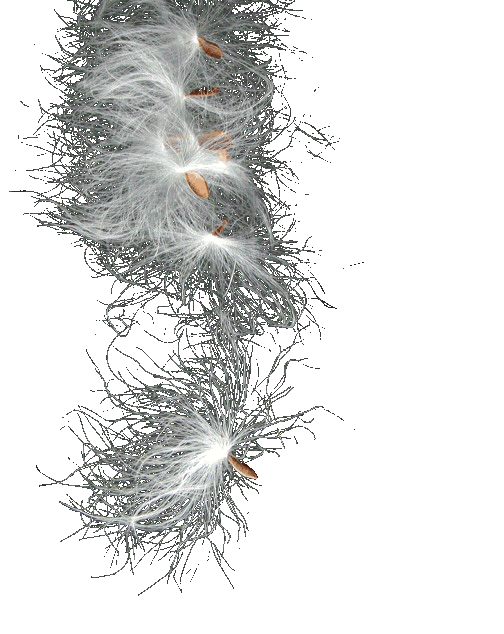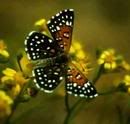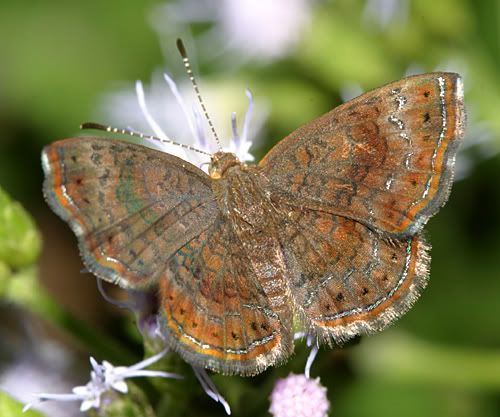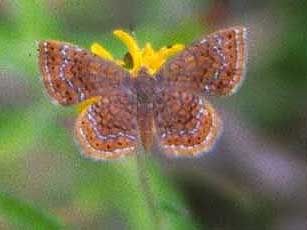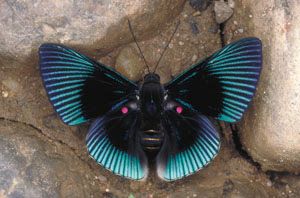X is for Xerces
Robert Michael Pyle-- one of my favorite people that I have never met.
Imagine him, with a bushy salt-and-pepper beard, sitting on an airplane as it crosses the Atlantic ocean. He's busily sketching on a stray piece of paper, in the precise way of a scientist who is used to diagramming and dissection.
It's a logo-- a butterfly, superimposed over a large X.
X is for Xerces-- a Persian king, and a butterfly.
Why, Pyle wondered to himself, is there no society for the protection of endangered insects? Insects are a very important part of our ecosystem. And even if they did little to add to the circle of life so crucial to the health of our environment, insects deserve protection just as much as an endangered cetacean or falconiform.
He called some of his insect-loving friends to see what they thought, and they shared his enthusiasm.
Thus the Xerces Society made its beginning.
The Xerces butterfly became extinct officially in the early 1940's, but the population of this genetically unique species was noticeably reduced as early as the late 1800's.
The Xerces had an extremely limited habitat--the sand dunes of the San Franciso peninsula. The females laid their eggs only on plants that were native to this habitat.
This is a common conundrum when dealing with butterfly population disruption. When you reduce the butterfly's native habitat, you are not only reducing the number of resources available to adult butterflies, you also tend to wipe out the types of plants that the caterpillars live on, and the plants that female butterflies lay eggs on.
Because butterfly plants tend to be looked upon as "weeds", they are typically cleared out even before the area is taken up with buildings and other expansionist endeavors.
The interesting thing about the Xerces and its rapid extinction, which went almost unnoticed and un-commented-upon, is that it is amazingly symbolic of the development of the area itself.
San Francisco was nothing more than a few, dry, windy sand dunes before the Spanish-American war. The Presidio at lobos creek, originally a Xerces blue habitat,is an area that is now saturated with golf courses and expensive restaurants.
Lobos creek became an American military base in the mid-1800's. Soon afterward, gold was discovered. Because of the ripple effect of the huge population boom during the 49'er gold rush, The Americans maintained this base on a minimal scale until the late 1800's when a major program of expansion and construction began.
A decade or so later, the Americans began fighting the Indian wars, and this base played an important role. After the wars ended, an attempt at conservation was begun, involving the creation Yosemite, Sequoia and General Grant national parks. It was already too late for Xerces.
Herman Behr stated in 1975 that the Xerces butterfly was all but extinct.
The story continues for a few more decades. There were rare sightings of this butterfly all the way until the early 1940's. The butterflies remained until the last of its major habitats, including Lake Merced, Lobos Creek and the west side of Twin Peaks, were inundated and stripped their natural vegetation.
What do we have now? I could write all about the inundation of the west side of twin peaks.
Or about the desecration of Lake Merced.
Or even about the deflowering and then refurbishment of lobos creek.
So what is San Francisco now? A human habitat, supposedly. Is this really what we human beings call our native habitat: Cement and skyscrapers?
The Xerces Blue was an ecologically fragile species. There were only a few small populations at the time they were first identified, and the populations seemed to be completely separate. They were a prime candidate for human-sponsored natural selection.
And here we are, rebuilding lost dunes, creating the dioramas of our nostalgia. Breathlessly breeding things back into existence.
Studying black and white pictures and trying to add the right amount of color to them-- but nobody alive still remembers the exact shade of blue.
"With a resolute whisper, Lobos Creek flowed past our home on its mile-long journey to the ocean. It was bordered, at times covered, with watercress and alive with minnows, tadpoles, and a variety of larvae. Water bugs skimmed the open surfaces and dragonflies darted above the stream bed. In spring, flowers were rampant and fragrant. In heavy fog the creek was eerie, rippling out of nowhere and vanishing into nothingness. I explored every foot, tunneling thruugh the thick brush and following the last small canyons in the clay strata before it met the Pacific. The ocean was too cold for swimming, so I would skirt the wave-foamed edge and follow the rocky shore to Fort Scott to the east or climb along the rugged cliffs to China Beach to the west. These cliffs were dangerous, but I was light and strong and could pull myself by my fingertips over minor chasms.
"A beautiful stand of live oaks arched over the creek. In about 1910, the Army Corp of Engineers, for unimaginable reasons, decided to clear out the oaks and brush. My father was out of town when the crime was committed. One of his favorite walks was through these glades to Mountain Lake in the nearby San Francisco Presidio; on his return, he became physically ill when he witnessed the ruthless damage."
--Ansel Adams
Imagine him, with a bushy salt-and-pepper beard, sitting on an airplane as it crosses the Atlantic ocean. He's busily sketching on a stray piece of paper, in the precise way of a scientist who is used to diagramming and dissection.
It's a logo-- a butterfly, superimposed over a large X.
X is for Xerces-- a Persian king, and a butterfly.
Why, Pyle wondered to himself, is there no society for the protection of endangered insects? Insects are a very important part of our ecosystem. And even if they did little to add to the circle of life so crucial to the health of our environment, insects deserve protection just as much as an endangered cetacean or falconiform.
He called some of his insect-loving friends to see what they thought, and they shared his enthusiasm.
Thus the Xerces Society made its beginning.
The Xerces butterfly became extinct officially in the early 1940's, but the population of this genetically unique species was noticeably reduced as early as the late 1800's.
The Xerces had an extremely limited habitat--the sand dunes of the San Franciso peninsula. The females laid their eggs only on plants that were native to this habitat.
This is a common conundrum when dealing with butterfly population disruption. When you reduce the butterfly's native habitat, you are not only reducing the number of resources available to adult butterflies, you also tend to wipe out the types of plants that the caterpillars live on, and the plants that female butterflies lay eggs on.
Because butterfly plants tend to be looked upon as "weeds", they are typically cleared out even before the area is taken up with buildings and other expansionist endeavors.
The interesting thing about the Xerces and its rapid extinction, which went almost unnoticed and un-commented-upon, is that it is amazingly symbolic of the development of the area itself.
San Francisco was nothing more than a few, dry, windy sand dunes before the Spanish-American war. The Presidio at lobos creek, originally a Xerces blue habitat,is an area that is now saturated with golf courses and expensive restaurants.
Lobos creek became an American military base in the mid-1800's. Soon afterward, gold was discovered. Because of the ripple effect of the huge population boom during the 49'er gold rush, The Americans maintained this base on a minimal scale until the late 1800's when a major program of expansion and construction began.
A decade or so later, the Americans began fighting the Indian wars, and this base played an important role. After the wars ended, an attempt at conservation was begun, involving the creation Yosemite, Sequoia and General Grant national parks. It was already too late for Xerces.
Herman Behr stated in 1975 that the Xerces butterfly was all but extinct.
The story continues for a few more decades. There were rare sightings of this butterfly all the way until the early 1940's. The butterflies remained until the last of its major habitats, including Lake Merced, Lobos Creek and the west side of Twin Peaks, were inundated and stripped their natural vegetation.
What do we have now? I could write all about the inundation of the west side of twin peaks.
Or about the desecration of Lake Merced.
Or even about the deflowering and then refurbishment of lobos creek.
So what is San Francisco now? A human habitat, supposedly. Is this really what we human beings call our native habitat: Cement and skyscrapers?
The Xerces Blue was an ecologically fragile species. There were only a few small populations at the time they were first identified, and the populations seemed to be completely separate. They were a prime candidate for human-sponsored natural selection.
And here we are, rebuilding lost dunes, creating the dioramas of our nostalgia. Breathlessly breeding things back into existence.
Studying black and white pictures and trying to add the right amount of color to them-- but nobody alive still remembers the exact shade of blue.
"With a resolute whisper, Lobos Creek flowed past our home on its mile-long journey to the ocean. It was bordered, at times covered, with watercress and alive with minnows, tadpoles, and a variety of larvae. Water bugs skimmed the open surfaces and dragonflies darted above the stream bed. In spring, flowers were rampant and fragrant. In heavy fog the creek was eerie, rippling out of nowhere and vanishing into nothingness. I explored every foot, tunneling thruugh the thick brush and following the last small canyons in the clay strata before it met the Pacific. The ocean was too cold for swimming, so I would skirt the wave-foamed edge and follow the rocky shore to Fort Scott to the east or climb along the rugged cliffs to China Beach to the west. These cliffs were dangerous, but I was light and strong and could pull myself by my fingertips over minor chasms.
"A beautiful stand of live oaks arched over the creek. In about 1910, the Army Corp of Engineers, for unimaginable reasons, decided to clear out the oaks and brush. My father was out of town when the crime was committed. One of his favorite walks was through these glades to Mountain Lake in the nearby San Francisco Presidio; on his return, he became physically ill when he witnessed the ruthless damage."
--Ansel Adams
